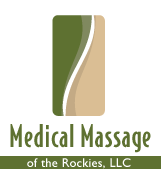
| 1. | Releases Tight and Sore Muscles which can Cause Ischemia. (Ischemia: A lack of blood supply to soft tissues, which causes hypersensitivity to the touch and allows for further injury to the tissues) |
| 2. | Helps Relieve Nerve Compression or Entrapment. (Pressure on a nerve by soft tissue, cartilage or bone, which can contribute to muscle atrophy, referred pain, paresthesia, and conditions such as pseudo sciatica, piriformis syndrome, pseudo angina, and others.) |
| 3. | Deactivates Myofascial Trigger Points. (Trigger Points: Areas of high neurological activity, which refer pain to other parts of the body. |
| 4. | Decreases Pain and Inflammation: Massage can restore strength and flexibility to your muscles, improving their overall function. It's the ideal treatment for releasing tension or muscles in spasm and helps to release toxins such as lactic acid (produced by muscle tissue during exercise). |
| 5. | Alleviates Stress and Improves Circulation: Proper circulation is vital to continued health. Your blood and lymph carry nourishment to the trillions of cells throughout your body and then carry away the waste to be eliminated from the cells. Massage encourages a better exchange of nutrients at the cellular level and more thorough detoxification. Massage has been practiced for thousands of years and is one of the earliest health treatments known to man. That is why it remains one of the best ways of dealing with everyday stress and pain within the soft tissues. |
| 6. | Increases Flexibility and Range Of Motion: By reducing hypertonicity and hypotonicity the muscles allow for normal ranges of motion to be restored. This also reduces the forces being applied to the joint capsule and diminishes the potential for joint and disk degeneration. |
| 7. | Calms the Nervous System: The first sense to develop is your sense of touch. It's not surprising when you consider that each square inch of your skin contains roughly 50 nerve endings. With as many as five million total touch receptors in your skin relaying messages on to your brain, your body's initial response to massage is to relax and de-stimulate. Even a simple touch has been shown to lower blood pressure and reduce the heart rate. Touch can also signal the brain to produce endorphins, your body's natural pain suppressors. The nervous system is your communication network, sending messages constantly that determine proper functioning throughout your body. Stress can affect the ability of the nervous system to do its job. The many nerve endings found in the skin and muscles are soothed by massage, and this contributes to keeping your internal lines of communication open and operational. |
| 8. | Improves Posture and Coordination: We believe that many of today’s pain issues are from incorrect body mechanics and posture that we continue to place ourselves in on a daily basis which then becomes very similar to a repetitive motion injury. This is one of our primary focuses for the people that we work with, the simple education of correct body posture starting with the neck down to the feet. |
| 9. | Medical Massage is cost effective: By assisting the client towards a quicker recovery from acute headaches, neck/back pain, skeletal muscular strains, sprains, etc. he or she is able to return to a normal productive life including work and recreation. |
| 10. | Medical Massage also helps to prevent future chronic pain conditions by effectively dealing with the cause of the problem and eliminating it. Overall Medical Massage achieves results and substantial cost savings to the client, employer and to society. As the general public becomes more familiar with the role of the Medical Massage Therapist they will be better able to handle their everyday soft-tissue pains. |
